Who was the female psychoanalyst and what do her theories say about trauma and personality?
Did you enjoy this article? Checkout the podcast here: https://gettherapybirmingham.podbean.com/

Karen Horney was a German psychoanalyst. Her career came into prominence in the nineteen twenties when she formed theories on human attachment and neurosis that split from Freud’s key ideas. Horney’s theory of personality development and individuation are still highly relevant to modern theories of personality, attachment psychology and psychological trauma. Even though she is not well remembered, her work is as relevant as it was at the turn of the century. Applying her theories to my work with patients and to my own life has been an integral piece of my own personal and professional development.
At the time of this writing my daughter is two. Sometimes when my wife and I relax slightly in public, she will get a glimmer in her eye and, starting to giggle, run away from us. While we will yell for her to stop, she will cackle drunk with her new found power, as she runs away into a crowd of strangers or into oncoming traffic. When we take her to school or to meet new people she wraps herself around my wife’s leg, pressing her cheek into my wife’s calf, and refuses to speak.
Two year old children cannot understand moderation or limitation. They demand to have “more food” even when their plate is overflowing. Minutes later they will refuse to eat another bite because they are “full”. They cannot understand shades of gray. They refuse to believe that they need a nap until their eyes are closing. People are either all “bad guys” or all “good guys”. Individual children live in a world of extremes with tunnel vision on their immediate present desires and realities.
Infants do not understand that they are separate creatures from their mother. The first developmentally traumatic event in an infant’s life is the separation from the mother as the infant becomes a toddler. Infants are connected to the mother for so much of their post birth experience. In order to soothe infants we try to make them feel as though they are still in the womb. We swaddle infants, keep them warm, and play white noise. The mother is both their source of physical comfort and nourishment. So much of the infant’s conscious experience is centered on its connection to its mother, that it makes sense that infants would lack the ability to understand what they are outside of the central reality of their experience.
For the nine months in the womb an infant is physically and psychologically dependent on its mother. It takes at least one and a half years after being born for infants to begin to piece together that they will have to eventually become something separate from their mother. Because infants cannot understand their existence without their mother, this means that when they are inevitably forced to separate from their mother, infants feel like their existence is under threat. The necessary task of the mother is to separate the child from herself into itself. Yet, this feels to the child like it is being obliterated. This is often the first major trauma of a child’s life.
Karen Horney’s theory of personality and neurosis is built on examining its effect on an infant’s development. When toddlers begin to be separated from their mothers they experience moments where they, like my daughter, think they are God and can run through traffic. They are completely independant, completely free, can do things “by themself”, and will never need supervision or approval from parents again. They quickly alternate into periods of abject terror where they are horrified with their agency as an independent being and, often wrapping themselves around her leg, attempt to remerge with their mother.
The distinction between infant and toddler is between a creature that can not live independently and a creature that sometimes thinks it can. Toddlers alternate between rejecting all authority to become a god and trying to crawl back into the womb in order to forget they exist. Our ego is what allows us to navigate the overwhelming forces of the unconscious. The ego allows us to accept both our autonomy and reconcile our own ultimate insignificance. Toddlers are just beginning to develop an ego that will synthesize these competing, and contradictory realities.
As a trauma therapist I use Horney’s theories constantly. The connection between the way that our parents give us attention and the way we learn to get attention from others in later life is endlessly relevant in many types of therapy, especially work with trauma. In Horney’s theory of neurosis, the way that a child individuates from their mother determines their coping style and predicts many of the psychological issues they may develop in later life.
Moving Towards People
The first coping strategy that children will attempt in order to retain the connection with the mother during individuation is to ask for help Horney called this stage moving towards people. As infants we cry in order to make our mothers come running to our aid. If our mother’s continue to come running to our aid for the rest of childhood however, this can impair our development as we fail to learn to solve our own problems internally or assert ourselves. In extreme cases where mothers will not separate from a child to allow room for experimentation with assertive aggression or self soothing behavior the child becomes neurotic and co-dependant in the moving towards people style.
People and characters with this level of impairment see the entire world in terms of their mother and never learn to make their own judgements or form their own values. What would mother think of this? That is against mother’s rules. Another force like a charismatic leader, romantic partner or social identity may replace the actual mother at some point, but the inability to be a separate person will remain. Persons over dependent on another person or group’s ego have no ability to self soothe without the warm glow of the surrogate mother’s approval and ability to define rules and worth.
Horney calls this neurosis the need for affection and approval. The sense of self in people with this personality type is incredibly diffuse as they are not able to watch others withdraw their approval even for good reason. The psychologist Albert Ellis used to tell his patients that “It is pathological to want to be liked by everybody all the time”. I often tell mine that “There are times when the loving or the honest thing to do is to piss someone off”. When we cannot stand to see our standards judged by other people it means that we cannot have a stable sense of self with authentic standards for self worth.
This need often manifests as a form of codependency in relationships or friendships as people try to replace the stabilizing presence of a controlling caregiver with a different set of rules and boundaries. We learn to tolerate the anxiety of not knowing what to do and being forced to choose early in life. When we have not been allowed to adapt to making small choices over the life course we decompensate in the face of larger overwhelming choices about our life and identity.
In therapy I encounter patients who have had a controlling caregiver, and a corresponding inability to develop their own sense of identity. I start by asking them simple questions about who they are. Patients with an underdeveloped sense of personal identity will often have no idea what their basic preferences and beliefs are. Often they will have found an abusive partner or a rigid social, political, or religious group to fill up the “blank” spaces in their identity with. In healthy partnerships we are allowed to maintain our own sense of identity while still participating in a group affiliation or romantic partnership.
I always frame the therapy with these patients as an exciting adventure that we are going on together. We are going to discover who the patient is and who they want to become. Patients of this coping style often will try and figure out what the therapist wants them to do and what the “new rules” that the therapist has for their life are. Their primary fear is that they will do something “wrong” and don’t know what the “right” answers are to their life questions. I tell patients that “You are the only best expert in how to be you”.
While the freedom and gray area of this kind of personality development therapy is initially terrifying to patients, eventually this style of therapy becomes exhilarating as patients reconnect to a long absent sense of self. Even though patients present to therapy blank and indifferent about their, often abusive and traumatic history, they will start to recognize moments in the past when they had a strong emotion or a preference that was dismissed by a caregiver or a partner. “I was so angry that my clothes were picked out for me every day”. “I was told that good christians don’t go to prom”.
Not all people in the moving towards people neurotic type will use a partner to try and complete their functioning. Oftentimes I have patients with social and intellectual gifts that use admiration, fame or envy in order to move towards people. Many people seek fame or attention, but those with a moving towards people neurosis will not be able to function without admiration of others. These patients are not able to determine the value or morality of their behavior without group approval.
Moving Against People
In Horney’s theory of individuation, the individuating child will settle into one of three different personality styles based on what allows it to successfully reclaim it’s parents’ attention. The first style that children try is the moving towards people style. This is most familiar to the child since this is the style they are accustomed to using in infancy. If this asking for attention and attempting to be close to the mother through affection fail, the child will next try aggression in order to force it’s caregiver to give it what it wants. If only aggression is effective the child will settle firmly into a moving against people personality style.
People in the moving against people personality style had sporadic or unpredictable affection offered to them as children. They came from environments that were hostile or uncaring and handled the fundamental insecurity that these environments engendered by becoming aggressive. They never had the option of asking for the basic attention children need and instead learned to demand attention. Caregivers were neglectful and unresponsive until these fought for the little affection or attention available in their home.
This reality in their family of origin colors these patient’s interpersonal style and assumptions about the world. These assumptions about others and the world are immediately recognizable in the first few minutes of the first therapy session when a patient in the moving against people personality style presents to therapy. Patients in the moving against people personality style are not likely to come to therapy and do not usually present to therapy until they are in crisis or are facing significant personal or professional losses due to their rigidity.
Just as patients in the moving towards people personality type often have anger turned off, patients in the moving against people personality type are often out of touch with their ability to feel hurt or vulnerable. To ward this feeling off patients in theis personality style develop a “don’t mess with me” defensive posture. They may use wit as a weapon becoming acerbically funny. They maybe overly macho or simply act like they don’t care what anyone thinks.
Most often patients who are neurotic in the moving against people personality style are highly competitive and motivated to dominate athletics, group functions and professional environments. Patients in this style are often high achievers when they are skilled. They are seen as invulnerable at work but often feel hollow in personal spheres. They are unable to understand the point of life without comparison and competition. Patients often present to therapy in middle age when there is “nothing else left to win”.
Moving Away From People
Horney’s three neurotic personality styles can most simply be understood as dependency (moving towards people), Aggression (moving against people) and resignation (moving away from people). The resigned type is the result of the developing child discovering that they are unable to get the attention of the parent either through asking for attention or demanding it. The child then retreats into an inner world where it creates its own systems of psychological reward through creativity and self expansion.
If you are a writer or a psychotherapist it is highly likely that you are strongly developed in this area even if you are not quite a neurotic! The ability to move into your head and create your own rules and concepts for life is a useful skill, but not one we learn from asking or demanding attention from our parents. These personality types are more able to see through the arbitrary nature of the rules or traditions in a society, and have less attachment to the cultural rules. Unless these children develop ways of communicating these inner worlds they can seem “spacey” or “lost in their thoughts”.
All of the neuroses that Horeney observes can be understood as the limiting conditions that a person with insecure attachment has for being safe. The dependent type needs others to feel safe, while the aggressive type needs control. A person in the “moving away from people” neurotic type only feels safe when some inner condition of solitude or independence has been fulfilled. This ultimate value of independence can present in several ways. Some want to be invisible, living an unassuming and private life. Sometimes the fixation on independence manifests and living off the land, being wealthy, and sometimes as being emotionally independent. Patients in this style may emulate Jay Gatsby, Jeremiah Johnson or John Wayne.
The moving away from people’s personality type is not comfortable unless they are absolutely independent in some special area. While the moving towards people type needs people in order to function, and the moving against people personality type needs people in order to become dominant, the moving away from people type feels unsafe if it needs people for anything substantial. This does not mean that they are unsuccessful socially, only that they are uncomfortable with relying on social or emotional ties to others in order to feel stable. This type failed to maintain a connection with their mother through either dependence seeking or aggressive behaviors. They learned to soothe themselves and learned their own coping skills.
This process of learning to regulate one’s own emotions as a child without assistance leads children into their own head where they develop a large and elaborate inner world. Children become less interested or even aware of external realities like norms, socialplay, or practical tasks. Instead of learning to manage their feelings they become fascinated with them. Moving away from people personality type patients have a unique knack for encoding their beliefs, personality and opinions into artistic creations because they crave the recognition and understanding that was denied them by their caregivers as children. Art, humor, fashion, business even, is a way of communicating something about the hidden self to others.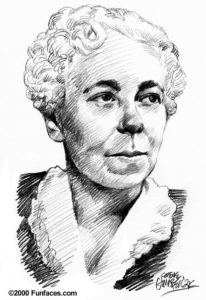
Bibliography:
Horney, K. (1950). Neurosis and human growth: The struggle toward self-realization. W.W. Norton & Company.
Horney, K. (1945). Our inner conflicts: A constructive theory of neurosis. W.W. Norton & Company.
Horney, K. (1937). The neurotic personality of our time. W.W. Norton & Company.
Horney, K. (1967). Feminine psychology. W.W. Norton & Company.
Horney, K. (1942). Self-analysis. W.W. Norton & Company.
Homey, K. (1991). Final lectures. W.W. Norton & Company.
Quinn, S. (1987). Karen Horney: A feminist psychoanalyst. W.W. Norton & Company.
Rubins, J. L. (1978). Karen Horney: Gentle rebel of psychoanalysis. Delta.
Rubins, J. L. (1964). Karen Horney: Comprehending and countering her basic assumptions. American Imago, 21(3), 214-239.
Westkott, M. (1986). The feminist legacy of Karen Horney. Yale University Press.
Further Reading:
Bateman, A., & Fonagy, P. (2004). Psychotherapy for borderline personality disorder: Mentalization-based treatment. Oxford University Press.
Bowlby, J. (1988). A secure base: Parent-child attachment and healthy human development. Basic Books.
Bowlby, J. (1982). Attachment and loss: Retrospect and prospect. American Journal of Orthopsychiatry, 52(4), 664-678.
Chodorow, N. J. (1999). The reproduction of mothering: Psychoanalysis and the sociology of gender. University of California Press.
Fairbairn, W. R. D. (1952). Psychoanalytic studies of the personality. Routledge.
Greenberg, J. R., & Mitchell, S. A. (1983). Object relations in psychoanalytic theory. Harvard University Press.
Kohut, H. (1971). The analysis of the self. International Universities Press.
Linehan, M. M. (1993). Cognitive-behavioral treatment of borderline personality disorder. Guilford Press.
Winnicott, D. W. (1960). The theory of the parent-child relationship. The International Journal of Psychoanalysis, 41, 585-595.

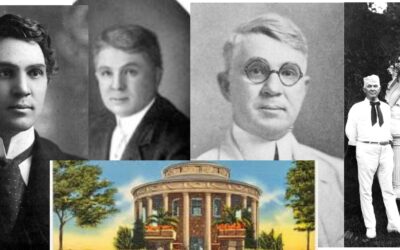

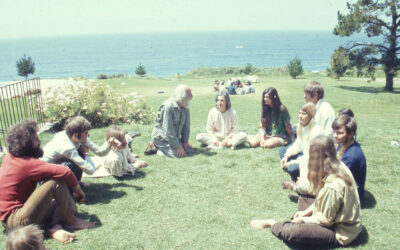

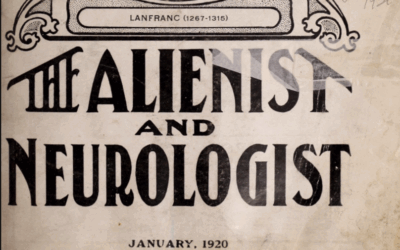


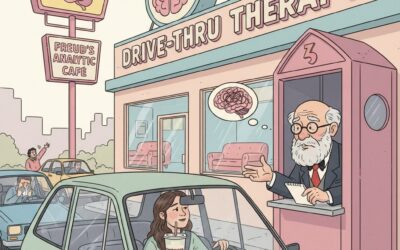

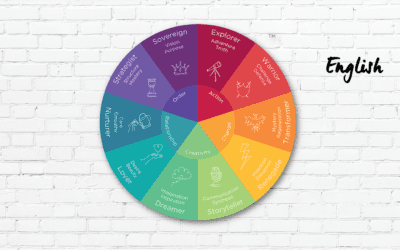















0 Comments